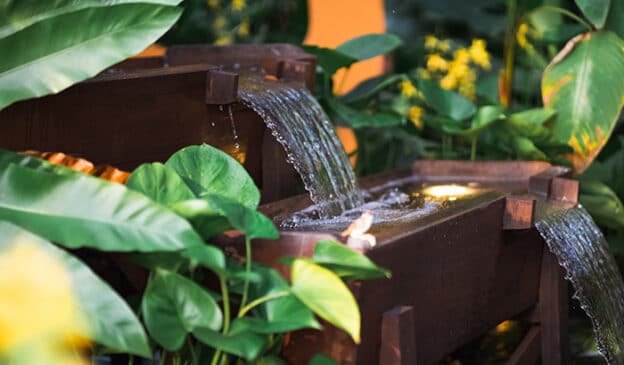Mulching your garden can benefit your plants and flowers in several ways. Here’s everything you need to know about mulch.

What is Mulch?
Mulch is a material that you spread over the soil in your garden or lawn to promote healthy plant growth.
An important thing to know about mulch is that there are two different types, organic and inorganic. Organic mulch comprises once-living organisms like plants, and inorganic mulch is made of geotextiles and black plastic. Organic mulch helps to enrich the soil as it decomposes, whereas inorganic mulch doesn’t break down but keeps the dirt warm. Both mulch types discourage weeds.
Types of Mulch
When it comes to mulch, you’ve got choices. There are six different common types of mulch you can choose between.
- Grass clippings
- Compost
- Woodchips
- Straw or hay
- Plastic mulch
- Geotextiles
Each of these materials has different characteristics that could benefit your garden in different ways. Additionally, when mulching flower beds, you can also choose a mulch type that will fit your yard or home style.
Benefits of Mulch
There are many benefits to mulching your garden; some of them include:
- Preventing weed growth
- Adding nutrients to the soil
- Preserving water in the ground making plants more drought-resistant
- Controlling pest populations
- Creating a seamless landscaping design
How Often Should You Mulch Your Garden?
Depending on the type of mulch you are using and the climate conditions in your area, your mulch can last anywhere from several weeks to years. Organic mulch should last between 5-6 years but is sometimes replaced every 1-2 years. The main reason for this is that dyed mulch, like wood chips, will eventually fade in color. Although it will still function properly, faded mulch is less pleasing to the eye.
When mulching grass, you will want to reapply mulch often during the growing season to keep your grass healthy and prevent the spread of disease; you can do this by hand or with a lawnmower designed specifically for mulching.
Contact LaytonScape
Now that you know about mulch, it’s time to start working on achieving the garden and yard of your dreams, and that’s where the experts at LaytonScape come in. We offer garden design, hardscape and landscape services, and much more. Contact us today to request a free estimate on your next project; we serve Davis, Weber, Morgan, and Summit counties in Utah.



